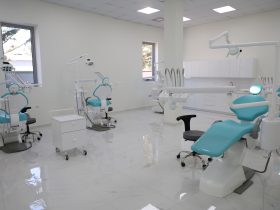The EU medical technology regulations need a rethink to boost competitiveness that better safeguards patient access to innovation
Europe has a strong and diverse medical technology sector and some of the best health services in the world. However, a serious crisis is on the horizon, which threatens our shared progress. We must address this challenge together.
Patients face the real prospect of vital medical technologies disappearing from the European market in the coming years, despite being used safely now. For healthcare professionals, the risk of having to find alternative and less effective products is now a real possibility. Some of the 35,000 medical technology companies employing people in Europe are experiencing significant challenges with medical technology regulations. Until they are addressed, these scenarios will spell significant obstacles to EU competitiveness and the delivery of medical products to our healthcare systems.
If this is news to you, you may be asking: How did we get here?
The new EU Medical Device Regulation (MDR) and In Vitro Diagnostic Medical Devices Regulation (IVDR) were adopted 7 years ago and have been applicable since May 2021 and May 2022, respectively. They represent the biggest change in the regulatory system in over 20 years. The goal was to establish a robust, predictable, and sustainable regulatory framework that would ensure a high level of safety while supporting innovation.
MedTech Europe and Irish Medtech members support these objectives, and industry has invested heavily into adapting for this change. However, the regulations are not living up to their goals.
As someone who is dedicated to championing Ireland and Europe’s dynamic medical technology sector, it pains me to say the viability of our industry is at stake. Listening to colleagues across the EU and especially at home here in Ireland, it is now evident that the new regulatory landscape has resulted in lengthy, inefficient and bureaucratic procedures. And, there is growing concern that the gap in support for innovation is affecting patients’ access to essential technologies. I am delighted that I can say however that the Irish government has taken a leadership role at European Health Ministers meetings (EPSCO) on the medical technology regulatory system and, too, Irish MEPs in highlighting this as a priority at EU level.
The value of a positive policy environment
Ireland, while a small country, punches well above its weight as a global medical technology hub, hosting nine of the top 10 global medical technology companies as well as hundreds of start-ups and small and medium-sized enterprises.
Every day, I see the benefits of our sector for patients and for the creation of good jobs with over 48,000 employed directly in Ireland and a strong export economy delivering over €13bn. A positive regulatory and policy environment is essential to attracting and keeping investment in innovation – as well as ensuring that those innovations are made available to patients in a timely manner.
Research from MedTech Europe and from Irish Medtech reveals a stark picture of what would happen without significant reforms to the new regulations and also reflects what I am hearing on the ground from companies across our industry.
Up to one in three of todayʼs In vitro diagnostics and medical devices are expected to be discontinued. One in two clinicians has experienced issues with the availability of medical devices since the introduction of the MDR. One in three medical technology manufacturers is deprioritising the EU market as the geography of choice for first regulatory approvals. This is in sharp contrast to the US and Asia, which are becoming preferred locations of choice for product launches – meaning we are not looking at an industry-wide problem; it is an EU regulatory problem.
While the targeted amendments over the last few years have provided more time for companies to transition to MDR and IVDR, they do not solve the structural issues associated with the regulations. As the biggest challenges are baked into the current regulations, we call on policymakers to consider our proposed solutions to make the system work better.
Let’s make the MDR and IVDR work.
Our vision for change
The medical technology industry in Ireland, as in Europe, has always prided itself on making proactive and positive contributions to policy. We want to help the EU achieve the original goals of modernising the regulatory landscape. That is why the European medical technology industry has invested significant energy in developing a vision for an efficient, innovation-focused, and well-governed regulatory framework.
We have identified three areas where comprehensive reforms are needed.
- An Efficient CE Marking System: Implementing the regulations is proving to be unpredictable, slow, complex and costly. We need a more efficient and resource-effective CE marking system that improves predictability, reduces administrative burden, and adapts to external changes.
- A System that Works for Innovation: Europe is not keeping pace with the innovation dynamics of medical devices. We propose the inclusion of an innovation principle that swiftly connects the latest medical technologies to European patients and health systems through dedicated assessment pathways and early dialogues with developers.
- An Accountable Governance Structure: There is a lack of system-level governance. We suggest the establishment of a single, dedicated structure to oversee and manage the regulatory system, including the designation and oversight of Notified Bodies, with the authority to make system-level decisions.
Industry remains committed to working with all stakeholders on fostering the smooth implementation of the regulations through implementing acts, guidance, best practices or other means. But we need more than short-term solutions. Comprehensive and cohesive reforms in these three areas must be pursued now.






























Leave a Reply